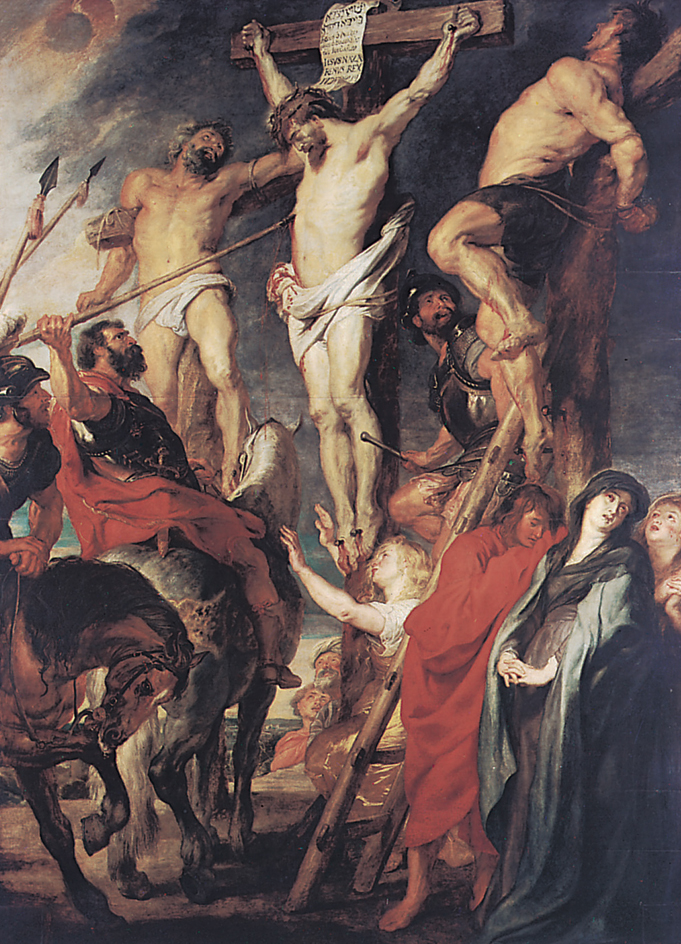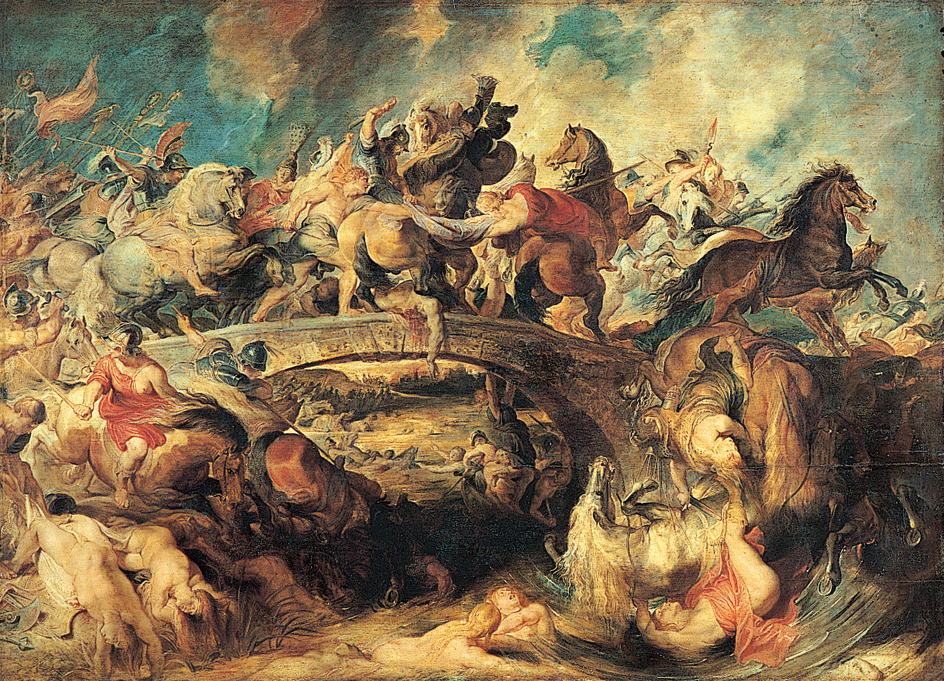Rubens, Peter Paul (1577-1640), was the greatest Flemish painter of the 1600’s. In addition to his paintings, Rubens made designs for book illustrations and tapestries, and occasionally for architecture and sculpture. He was also a scholar and a respected diplomat.
His life.
Rubens was born on June 28, 1577, in Siegen, Germany, of Flemish parents. After his father died in 1587, his mother returned with her children to her native city of Antwerp, in what is now Belgium. There, Rubens studied under local painters. He went to Italy in 1600 to study art. In Italy, he was employed as a painter by Vincenzo Gonzaga, duke of Mantua. In 1603, the duke sent Rubens to Spain as a member of a diplomatic mission. Rubens also spent time in Genoa and Rome.
Rubens went back to Antwerp in 1608, to visit his sick mother, but she died before he arrived. In Antwerp, Rubens was offered several important commissions for paintings, and he decided to remain in the city. In 1609, he married Isabella Brant, a member of a prominent Antwerp family. They had four children.
Also in 1609, Rubens became court painter to the Governors of the Netherlands, Archduke Albert and the Infanta Isabella, at Brussels. Rubens’s fame as a painter spread, and nobility and royalty throughout Europe sought his services. He also received many commissions from the Roman Catholic Church.

To carry out commissions for large-scale works, Rubens formed a large workshop with assistants. Rubens never claimed any of his assistants’ pictures as his own unless he had retouched them thoroughly. His most famous assistant was the Flemish artist Sir Anthony Van Dyck.
After his wife died in 1626, Rubens accepted several diplomatic assignments involving peace negotiations between England and Spain. His assignments took him to Madrid in 1628 and to London in 1629. King Charles I of England knighted Rubens for his skill in diplomacy.
Rubens married again in 1630 and gradually withdrew from political life. His second wife was a beautiful 16-year-old girl, Helene Fourment. Helene, like Rubens’s first wife, was a member of a prominent Antwerp family. Rubens painted her many times. They had five children. After 1635, Rubens spent much time at his country estate near Brussels. The beautiful landscape there became the setting for many of his late works. Rubens died in Antwerp on May 30, 1640.
His art.
The most important influence on Rubens’s style was the ancient Roman sculpture he studied in Italy. He was also influenced by the paintings and sculptures of such Italian Renaissance artists as Michelangelo, Raphael, Tintoretto, Titian, and Veronese. Among the artists of his own time, Rubens especially admired Caravaggio and Carracci.
Rubens was the most important Baroque artist of northern Europe. His paintings are known for their vast scale, brilliant colors, and emotional intensity. Rubens completed an enormous number of works. In one commission during the 1620’s, he painted 21 large pictures on the life of Marie de Medicis, the widow of King Henry IV of France. From 1630 to 1635, he painted nine huge canvases for the Banqueting House at Whitehall in London. In the mid-1630’s, he organized the artists of Antwerp to decorate structures in the city according to his designs to celebrate the visit of a new Spanish governor of the Netherlands. His last major commission was for a series of paintings to decorate the hunting lodge of King Philip IV of Spain.
Rubens’s subjects include hunting scenes, Biblical episodes, stories from classical mythology, portraits and self-portraits, and landscapes. Battle of the Amazons is an example of his Baroque style.

